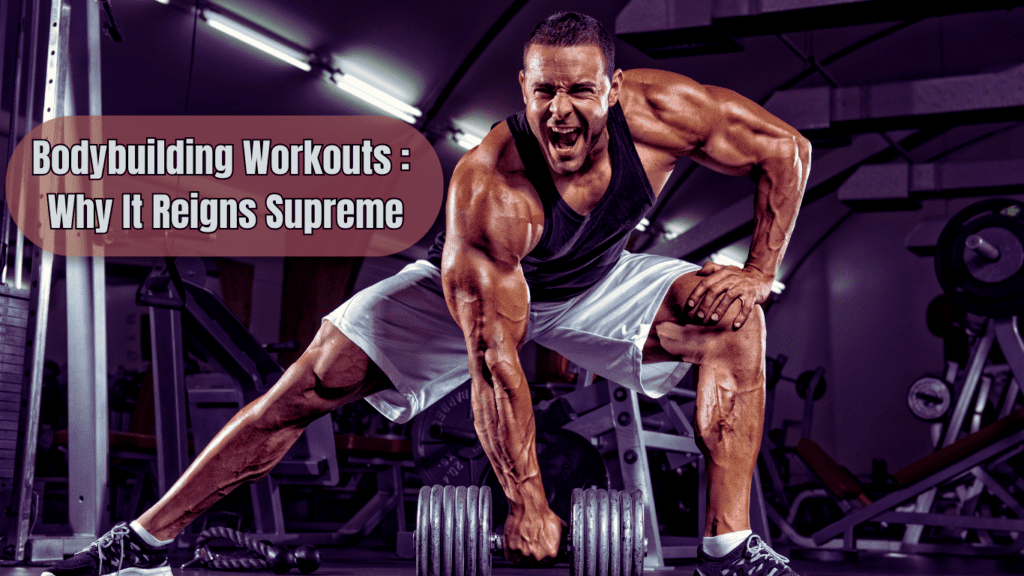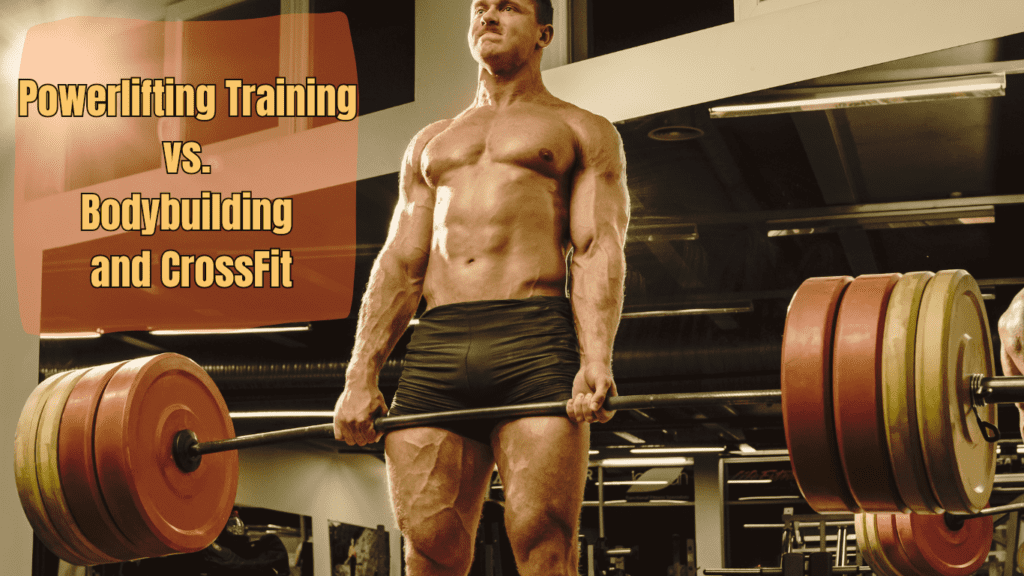CrossFit Workouts: A Comprehensive Overview
Fitness trends come and go, but one workout philosophy has stood the test of time: CrossFit workouts. With its unique blend of strength, endurance, and high-intensity training, it’s no wonder why millions of people have embraced this dynamic fitness method. Whether you’re a seasoned athlete or just starting your fitness journey, CrossFit workouts offer a comprehensive approach to health and fitness that can benefit anyone.
What is CrossFit Workouts?
CrossFit workouts are a functional fitness program designed to improve overall health, strength, and conditioning through constantly varied workouts that incorporate weightlifting, cardio, gymnastics, and other functional movements. Unlike traditional gym routines that focus on isolated exercises, CrossFit workouts challenge the body by combining multiple aspects of fitness into each session.
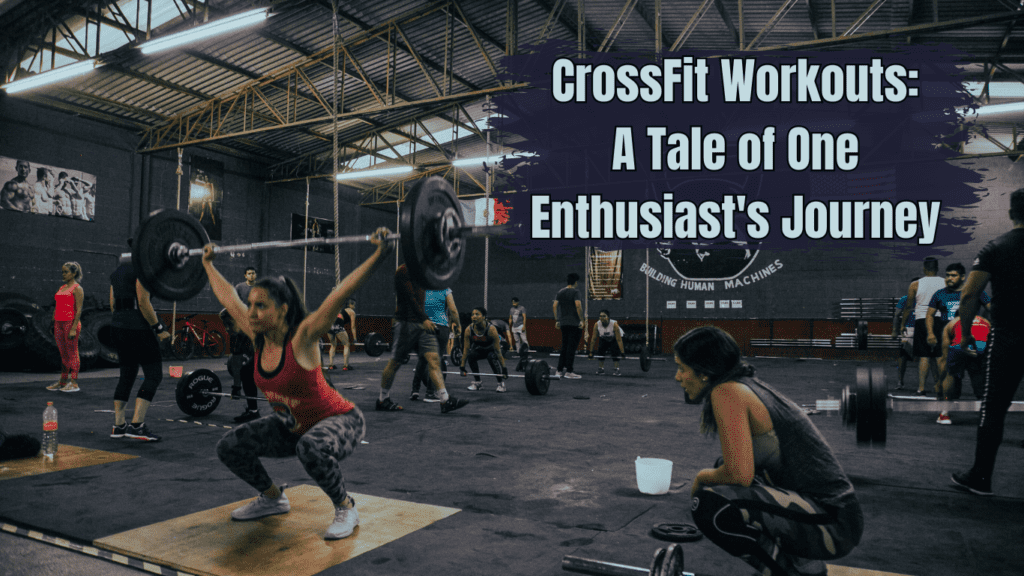
Why CrossFit Workouts Are Gaining Popularity
- Variety: Every session is unique, incorporating different exercises and challenges.
- Functionality: Movements are designed to mimic real-life activities, improving everyday physical abilities.
- Community: CrossFit fosters a strong sense of camaraderie and support, helping individuals stay motivated.
- Scalability: Workouts can be adjusted to suit any fitness level.
CrossFit Workouts vs. Bodybuilding and Powerlifting
When compared to Bodybuilding and Powerlifting, CrossFit workouts stand out by offering a balanced combination of strength, endurance, and agility.
Bodybuilding
- Focuses primarily on muscle hypertrophy (muscle growth).
- Involves repetitive, isolated exercises targeting specific muscle groups.
Powerlifting
- Centers around lifting heavy weights in the squat, bench press, and deadlift.
- Prioritizes strength development over overall fitness.
CrossFit workouts, on the other hand, combine strength training with cardiovascular and functional movements to provide a holistic approach to fitness. This balanced method is why many fitness enthusiasts choose CrossFit workouts over other styles of training.
Benefits of CrossFit Workouts
CrossFit workouts offer numerous advantages that appeal to people at all fitness levels:
- Improved Overall Fitness: Builds strength, endurance, and agility simultaneously.
- Community Support: Encourages motivation and accountability through group sessions.
- Varied Exercises: Keeps workouts interesting and helps prevent plateaus.
- Scalable Workouts: Suitable for beginners and advanced athletes alike.
In summary, CrossFit workouts provide a well-rounded, effective approach to fitness that transcends traditional training methods. Whether you’re striving for strength, endurance, or overall health, CrossFit deliver a comprehensive fitness experience.
Subscribe And Get Our Free E-Book:Unlocking The Power Of Nutrition-Supplements, Substitutes, and Superfoods!
Understanding Bodybuilding, Powerlifting, and CrossFit Workouts
When considering different fitness methods, CrossFit workouts often stand out due to their unique combination of functional movements and high-intensity training. However, before delving into why CrossFit have gained so much popularity, it’s important to understand the differences between Bodybuilding and Powerlifting, and how they contrast with the principles of CrossFit .
Bodybuilding
Bodybuilding is focused on isolating specific muscle groups to achieve maximum size and definition. The primary emphasis is on hypertrophy, which is the growth and increase in size of muscle fibers. This style of training often involves repetitive, isolated movements performed with moderate weights and high repetitions.
- Definition: Bodybuilding is centered around the idea of developing large, defined muscles through repetitive, isolated movements and high repetitions with lighter weights.
- Typical Workouts: Bodybuilding sessions typically involve exercises like bicep curls, leg presses, and bench presses, often with rest periods in between sets to avoid muscle fatigue during the training of individual muscle groups.
- Goals: The main objective of bodybuilding is muscle hypertrophy (growth) and symmetry for aesthetic purposes. Bodybuilders strive for visual appeal, symmetry, and muscle definition.Pros:
- Focus on muscle size
- Ability to target specific muscles
- Great for those focused on aesthetics
- Limited functional fitness benefits
- Can lead to muscle imbalances
- May neglect cardiovascular health
Bodybuilding excels in creating visually impressive physiques but may lack functionality in terms of overall physical fitness.
Powerlifting
Powerlifting focuses on lifting maximal weights in three specific compound lifts: squat, deadlift, and bench press. This sport prioritizes strength over overall fitness, and training typically involves low reps with very heavy weights.
- Definition: Powerlifting is centered around lifting maximal weights in the basic barbell movements, emphasizing low reps with extremely heavy weights.
- Typical Workouts: Powerlifting routines often consist of heavy sets of squats, deadlifts, and bench presses with minimal assistance exercises, focusing heavily on perfecting technique to handle maximum loads.
- Goals: The primary goal of powerlifting is maximal strength and performance in compound lifts. Athletes aim to lift as much weight as possible in the three main lifts.Pros:
- Builds immense raw strength
- Mastery of key compound lifts
- Great for competitive strength athletes
- Lacks focus on functional movements
- Can lead to overuse injuries
- Neglects cardiovascular fitness
While powerlifting excels in building raw strength, it often disregards other aspects of fitness, such as endurance and mobility, which are essential for a well-rounded athlete.
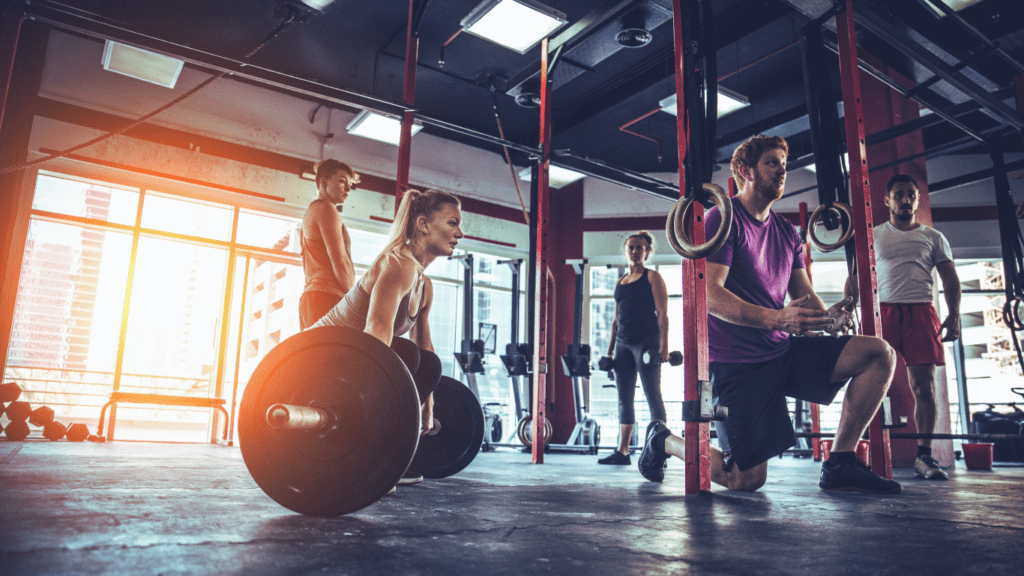
CrossFit Workouts
CrossFit workouts combine functional movements with high-intensity, constantly varied programming designed to improve overall fitness. Unlike Bodybuilding and Powerlifting, CrossFit emphasize a more holistic approach to fitness, including strength, cardiovascular endurance, flexibility, and mental toughness.
- Definition: CrossFit integrate functional movements in a constantly varied, high-intensity format, designed to enhance overall fitness.
- Typical Workouts: CrossFit workouts often include high-intensity interval training (HIIT), circuit-style training, and dynamic, functional movements. For example, a workout might involve Olympic lifts, sprints, bodyweight exercises, and kettlebell swings performed in short, intense bursts.
- Goals: The goal of CrossFit is to achieve General Physical Preparedness (GPP)—meaning fitness across multiple domains such as strength, cardiovascular endurance, agility, and mobility.Pros:
- Balanced approach to fitnessEnhances both strength and cardiovascular healthProvides functional movements for real-world application
- Intensity can be overwhelming if not scaled properly
- Risk of injury if form is not maintained
- Requires proper coaching for safety
CrossFit workouts aim to prepare individuals for a variety of physical challenges in everyday life, making them more applicable to real-world situations compared to the more isolated methods of Bodybuilding or the singular focus of Powerlifting.
The Distinction Between CrossFit and Other Fitness Methods
While Bodybuilding focuses on muscle hypertrophy and aesthetics, and Powerlifting on absolute strength, CrossFit workouts take a broader view. They aim to create a balance between strength, endurance, speed, agility, and flexibility. This multifaceted approach allows individuals to excel in a variety of physical challenges, preparing them for both sport and daily life.
Additionally, unlike Bodybuilding or Powerlifting, which may focus on specific aspects of fitness, CrossFit workouts encourage functional fitness—movements that mimic real-life activities. For instance, squatting, pressing, pulling, and running are movements regularly incorporated into CrossFit sessions because they reflect everyday tasks such as lifting groceries, climbing stairs, or playing sports.
Why Choose CrossFit?
CrossFit workouts are particularly appealing to those who want a well-rounded fitness regimen. Athletes and fitness enthusiasts alike appreciate its comprehensive approach, which goes beyond aesthetics or sheer strength to include functional, practical abilities. With a strong emphasis on high intensity, variation, and community support, CrossFit workouts offer an unparalleled way to build both physical and mental fitness.
4o mini
What Happens to Your Body When You Do CrossFit Every Day Video
Benefits of CrossFit Workouts Compared to Bodybuilding and Powerlifting
When considering different fitness methods, CrossFit workouts often stand out due to their unique combination of functional movements and high-intensity training. However, before delving into why CrossFit workouts have gained so much popularity, it’s important to understand the differences between Bodybuilding and Powerlifting, and how they contrast with the principles of CrossFit workouts.
Bodybuilding
Bodybuilding is focused on isolating specific muscle groups to achieve maximum size and definition. The primary emphasis is on hypertrophy, which is the growth and increase in size of muscle fibers. This style of training often involves repetitive, isolated movements performed with moderate weights and high repetitions.
- Definition: Bodybuilding is centered around the idea of developing large, defined muscles through repetitive, isolated movements and high repetitions with lighter weights.
- Typical Workouts: Bodybuilding sessions typically involve exercises like bicep curls, leg presses, and bench presses, often with rest periods in between sets to avoid muscle fatigue during the training of individual muscle groups.
- Goals: The main objective of bodybuilding is muscle hypertrophy (growth) and symmetry for aesthetic purposes. Bodybuilders strive for visual appeal, symmetry, and muscle definition.Pros:
- Focus on muscle size
- Ability to target specific muscles
- Great for those focused on aesthetics
- Limited functional fitness benefits
- Can lead to muscle imbalances
- May neglect cardiovascular health
Bodybuilding excels in creating visually impressive physiques but may lack functionality in terms of overall physical fitness.
Powerlifting
Powerlifting focuses on lifting maximal weights in three specific compound lifts: squat, deadlift, and bench press. This sport prioritizes strength over overall fitness, and training typically involves low reps with very heavy weights.
- Definition: Powerlifting is centered around lifting maximal weights in the basic barbell movements, emphasizing low reps with extremely heavy weights.
- Typical Workouts: Powerlifting routines often consist of heavy sets of squats, deadlifts, and bench presses with minimal assistance exercises, focusing heavily on perfecting technique to handle maximum loads.
- Goals: The primary goal of powerlifting is maximal strength and performance in compound lifts. Athletes aim to lift as much weight as possible in the three main lifts.Pros:
- Builds immense raw strength
- Mastery of key compound lifts
- Great for competitive strength athletes
- Lacks focus on functional movements
- Can lead to overuse injuries
- Neglects cardiovascular fitness
While powerlifting excels in building raw strength, it often disregards other aspects of fitness, such as endurance and mobility, which are essential for a well-rounded athlete.
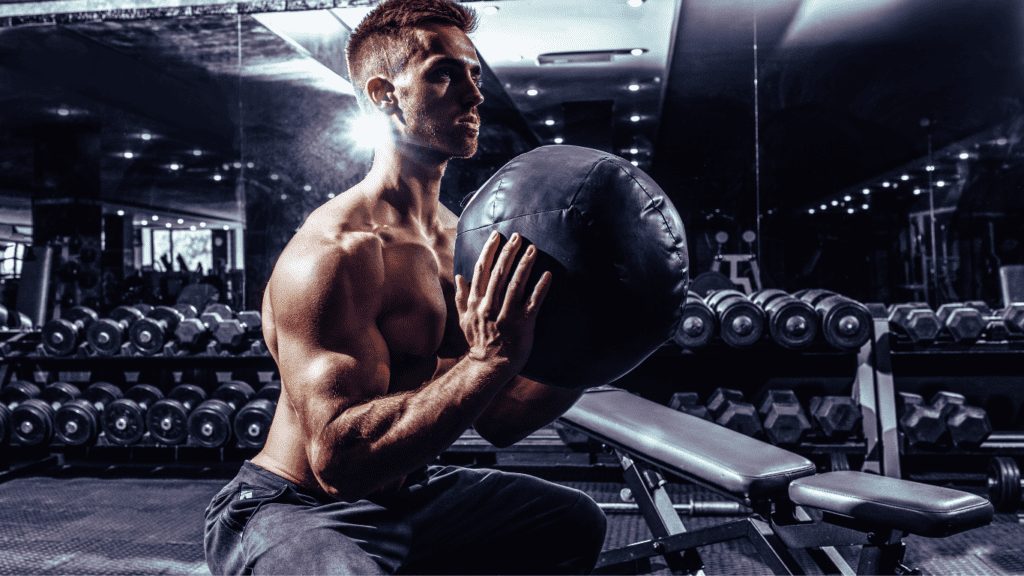
CrossFit Workouts
CrossFit workouts combine functional movements with high-intensity, constantly varied programming designed to improve overall fitness. Unlike Bodybuilding and Powerlifting, CrossFit workouts emphasize a more holistic approach to fitness, including strength, cardiovascular endurance, flexibility, and mental toughness.
- Definition: CrossFit workouts integrate functional movements in a constantly varied, high-intensity format, designed to enhance overall fitness.
- Typical Workouts: CrossFit workouts often include high-intensity interval training (HIIT), circuit-style training, and dynamic, functional movements. For example, a workout might involve Olympic lifts, sprints, bodyweight exercises, and kettlebell swings performed in short, intense bursts.
- Goals: The goal of CrossFit workouts is to achieve General Physical Preparedness (GPP)—meaning fitness across multiple domains such as strength, cardiovascular endurance, agility, and mobility.Pros:
- Balanced approach to fitness
- Enhances both strength and cardiovascular health
- Provides functional movements for real-world application
- Intensity can be overwhelming if not scaled properly
- Risk of injury if form is not maintained
- Requires proper coaching for safety
CrossFit workouts aim to prepare individuals for a variety of physical challenges in everyday life, making them more applicable to real-world situations compared to the more isolated methods of Bodybuilding or the singular focus of Powerlifting.
The Distinction Between CrossFit and Other Fitness Methods
While Bodybuilding focuses on muscle hypertrophy and aesthetics, and Powerlifting on absolute strength, CrossFit workouts take a broader view. They aim to create a balance between strength, endurance, speed, agility, and flexibility. This multifaceted approach allows individuals to excel in a variety of physical challenges, preparing them for both sport and daily life.
Additionally, unlike Bodybuilding or Powerlifting, which may focus on specific aspects of fitness, CrossFit workouts encourage functional fitness—movements that mimic real-life activities. For instance, squatting, pressing, pulling, and running are movements regularly incorporated into CrossFit sessions because they reflect everyday tasks such as lifting groceries, climbing stairs, or playing sports.
Why CrossFit Workouts Build a Strong Community and Holistic Fitness Lifestyle
One of the most unique aspects of CrossFit workouts is the strong sense of community they cultivate. Unlike other fitness methodologies, such as Bodybuilding and Powerlifting, which often emphasize individual progress and personal goals, CrossFit workouts create a supportive, team-oriented environment that enhances both motivation and long-term success.
Team-Oriented Training in CrossFit Workouts
- CrossFit workouts are performed in group settings, promoting a sense of belonging and shared goals.
- Workouts like WODs (Workout of the Day) involve partners cheering each other on, fostering accountability and motivation.
- The community atmosphere encourages participants to push beyond limits together, creating a supportive environment.
Isolation vs. Community
- Bodybuilding often revolves around solo training with minimal social interaction.
- Individuals focus on personal muscle development without much communal support.
- Powerlifting may involve small groups, but the focus remains on individual technique and performance rather than group dynamics.
Building Connections through Shared Goals
- CrossFit workouts are centered around group success and collective achievements.
- Inclusivity ensures everyone, regardless of fitness level, contributes to and benefits from the community.
- In contrast, Bodybuilding and Powerlifting place more emphasis on individual progress.
Powerlifting vs. CrossFit: Social Interaction
- Powerlifting gyms may offer camaraderie but focus heavily on individual strength progress.
- While social interaction exists, it does not match the collaborative and inclusive community found in CrossFit workouts.
Motivation and Longevity
- CrossFit workouts provide a higher level of motivation due to a strong social support system.
- Group accountability leads to increased adherence to fitness routines.
- Bodybuilding and Powerlifting may struggle with maintaining motivation due to their more isolated nature.
Holistic Lifestyle with CrossFit
- Beyond physical benefits, CrossFit workouts contribute to mental and emotional well-being.
- Strong relationships formed within the CrossFit community extend beyond the gym, promoting personal growth.
- In contrast, Bodybuilding and Powerlifting may lack this well-rounded, lifestyle-focused approach.
In conclusion, CrossFit workouts foster an environment that goes beyond physical fitness by promoting a supportive, inclusive community that enhances motivation, well-being, and long-term success.
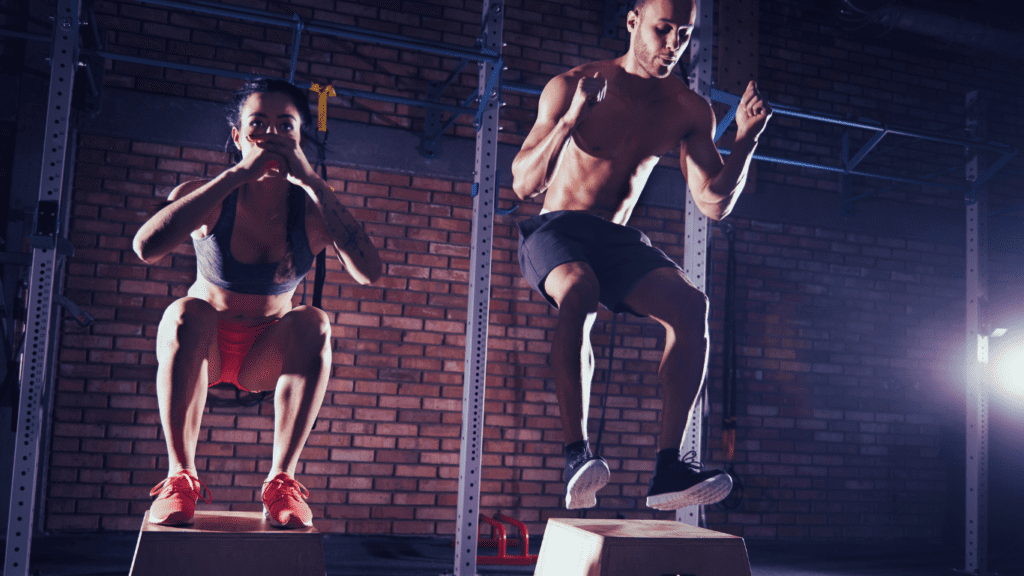
Choosing the Right Fitness Path: CrossFit Workouts vs. Bodybuilding and Powerlifting
When it comes to achieving fitness goals, understanding the distinctions between CrossFit workouts, Bodybuilding, and Powerlifting is crucial. Each has its unique approach and benefits, offering different ways to build strength, improve endurance, and enhance overall physical fitness. Let’s dive deeper into when CrossFit workouts are the best choice, and how they compare to Bodybuilding and Powerlifting.
When to Choose CrossFit Workouts
CrossFit workouts offer a balanced, functional, and comprehensive approach to fitness. Designed to improve strength, endurance, flexibility, and overall conditioning, CrossFit integrates various movements from weightlifting, gymnastics, and high-intensity cardio into one dynamic training program. This variety makes CrossFit workouts particularly appealing for individuals seeking a well-rounded fitness regimen.
Benefits of CrossFit Workouts:
- Variety: Unlike other fitness programs that focus on specific muscle groups or movements, CrossFit workouts are constantly varied. You’ll experience different movements each session, including Olympic lifts, powerlifting, cardio-based circuits, and bodyweight exercises. This helps prevent plateaus and keeps training exciting.
- Functional Fitness: CrossFit workouts train your body to handle real-life activities better. Movements like squats, deadlifts, kettlebell swings, and sprints mimic everyday tasks such as lifting groceries, climbing stairs, or carrying heavy objects.
- Community Support: CrossFit workouts are performed in group settings, fostering a sense of accountability and camaraderie. Partners cheer each other on, creating an environment where members push beyond limits together.
For individuals looking to improve not only their physical capabilities but also their overall health, CrossFit workouts provide a more balanced approach that extends beyond the gym. This approach addresses all aspects of fitness—strength, endurance, mobility, and flexibility—making it a versatile option for anyone who wants a holistic fitness journey.
When to Choose Bodybuilding
Bodybuilding is primarily focused on muscle hypertrophy, symmetry, and aesthetics. It’s ideal for individuals who want to develop a visually impressive physique with defined muscles and balanced proportions. The goal is to isolate muscle groups and achieve maximum definition through controlled, repetitive movements.
Characteristics of Bodybuilding:
- Isolated Training: Bodybuilding workouts often involve exercises like bicep curls, leg presses, and bench presses, targeting specific muscles in isolation. For example, a typical session might focus solely on building the chest muscles with flat bench presses, followed by isolation exercises for triceps and shoulders.
- High Repetitions and Low Weights: To achieve hypertrophy, bodybuilders perform higher repetitions with lighter weights, which allows muscles to work under tension for an extended period.
- Aesthetic Focus: The primary goal of bodybuilding is to sculpt the body for visual appeal. However, this single-minded focus may lead to imbalances and neglect of functional fitness elements.
While Bodybuilding excels in muscle definition and symmetry, its lack of functional variety limits its practical application in real-world situations. The workouts are repetitive, and the sole focus on aesthetics may not appeal to those looking for comprehensive fitness that supports long-term health.
When to Choose Powerlifting
Powerlifting is centered around lifting maximal weights in three key compound lifts: squat, deadlift, and bench press. Powerlifting focuses on brute strength and technique, with little emphasis on functional fitness, cardiovascular health, or flexibility. This type of training is ideal for individuals who want to lift heavy, competitive strength athletes, or those seeking to maximize strength in specific movements.
Features of Powerlifting:
- Maximal Strength Training: Powerlifting routines are designed to push the lifter to their limits in the squat, deadlift, and bench press. Repetitions tend to be low, usually ranging from 1-5 reps per set, with heavy weights.
- Technique-Focused: Powerlifters spend a significant amount of time perfecting their form to ensure maximum safety and performance.
- Minimal Functional Variety: Powerlifting rarely includes exercises that replicate real-life movements. There is little focus on balance, flexibility, or endurance, which may limit overall fitness benefits beyond strength.
For those solely interested in maximizing strength gains in specific lifts, Powerlifting can deliver impressive results. However, it may neglect other essential aspects of fitness like cardiovascular health, mobility, and functional movement patterns.
Choosing the Right Fitness Path
When deciding between CrossFit workouts, Bodybuilding, and Powerlifting, it’s important to consider your personal goals and preferences.
- CrossFit workouts offer a well-rounded approach, incorporating functional movements that benefit both your body’s strength and versatility.
- Bodybuilding focuses on muscle aesthetics and symmetry, ideal for those interested in building a visually impressive physique.
- Powerlifting caters to individuals seeking peak strength in specific compound lifts but may fall short in overall fitness.
Ultimately, your choice should align with what you want to achieve—whether it’s a balanced lifestyle, a specific physique, or just maximizing strength for performance. Each fitness path has its merits, but CrossFit workouts stand out for their ability to improve your overall fitness across multiple domains, offering a more holistic and sustainable approach to health and well-being.
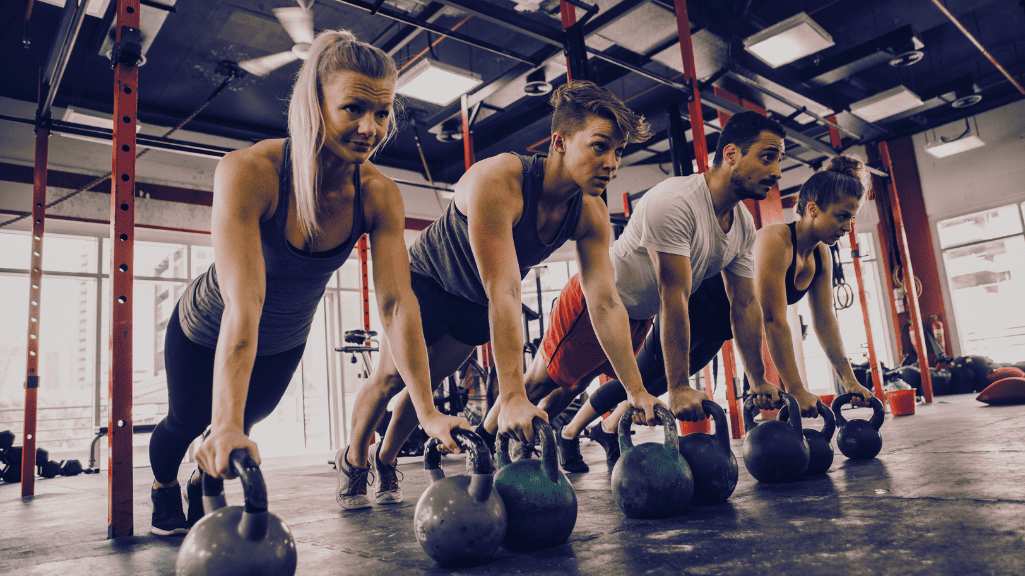
Comparative Analysis: CrossFit vs. Bodybuilding vs. Powerlifting
1. Performance Metrics Comparison Chart
Observation: CrossFit excels in providing a balance between strength, endurance, and cardiovascular health, making it superior in overall fitness enhancement compared to bodybuilding and powerlifting.
2. Injury Rates Analysis Chart
| Type of Injury | CrossFit | Bodybuilding | Powerlifting |
|---|---|---|---|
| Acute Injuries | Moderate | Low | Moderate |
| Chronic Injuries | Low | High | Moderate |
Observation: CrossFit demonstrates a lower incidence of chronic injuries compared to bodybuilding and powerlifting, emphasizing its focus on proper form and functional movements.
3. Time Efficiency Comparison Chart
| Time Spent | CrossFit | Bodybuilding | Powerlifting |
|---|---|---|---|
| Average Session Time | 60 mins | 90 mins | 75 mins |
Observation: CrossFit sessions are notably more time-efficient compared to traditional bodybuilding and powerlifting workouts, offering a comprehensive workout in a shorter timeframe.
4. Community Engagement Analysis Chart
| Community Support | CrossFit | Bodybuilding | Powerlifting |
|---|---|---|---|
| Group Workouts | High | Low | Low |
| Peer Motivation | High | Low | Low |
| Coach Guidance | High | Low | Low |
Observation: CrossFit fosters a strong sense of community and support, with group workouts, peer motivation, and coach guidance being integral parts of the experience, distinguishing it from bodybuilding and powerlifting.
The Transformative Power of CrossFit Workouts: Embracing Functional Fitness and Community
Throughout this article, we’ve explored the many facets of CrossFit workouts and compared them to Bodybuilding and Powerlifting. From understanding their unique benefits to recognizing how they cater to different fitness goals, it’s evident that CrossFit workouts offer a comprehensive approach to achieving overall fitness. Below, we’ll summarize the key points discussed and explain why CrossFit workouts have earned their place as a top choice for fitness enthusiasts.
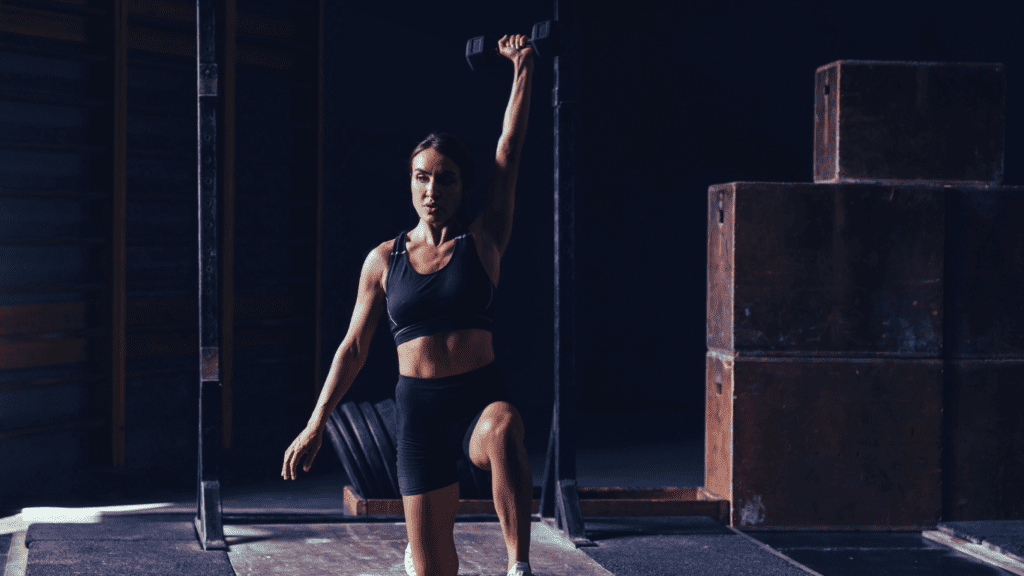
1. Functional Fitness and Real-Life Application
One of the most important aspects of CrossFit workouts is their emphasis on functional fitness. These workouts are designed to improve movements that translate into real-life activities. Whether it’s lifting, pushing, pulling, or carrying, CrossFit workouts train your body to perform in ways that are practical and beneficial outside the gym. This focus on functionality helps bridge the gap between strength and everyday performance, setting CrossFit workouts apart from the more isolated and specific movements seen in Bodybuilding and Powerlifting.
2. Variety vs. Monotony
CrossFit workouts stand out because of their variety. Unlike Bodybuilding, which often focuses on repetitive movements targeting individual muscle groups, or Powerlifting, which is centered around a few specific compound lifts, CrossFit workouts offer a constantly changing approach to fitness. This prevents plateaus and keeps both physical and mental engagement high. With movements ranging from Olympic lifts to high-intensity circuits, CrossFit workouts ensure that you’re never doing the same workout twice, making it more exciting and effective over time.
3. Balanced Fitness Approach
Another significant advantage of CrossFit workouts is the balanced approach they provide to fitness. They combine strength, endurance, mobility, and flexibility, creating a well-rounded training program. While Bodybuilding may prioritize aesthetics and Powerlifting may focus solely on raw strength, CrossFit workouts excel in developing a comprehensive fitness foundation. This balance ensures that participants are improving multiple aspects of their health and performance.
4. Community and Supportive Environment
CrossFit workouts are not only about individual performance but also about fostering a supportive community. Training in a group setting creates accountability and encouragement, motivating participants to push through difficult workouts. This community aspect is something that sets CrossFit workouts apart from solo-focused training methods like Bodybuilding or Powerlifting, where individuals often train alone or within smaller, specialized groups.
After exploring the benefits of CrossFit , it’s clear why they have become a popular choice for individuals at various fitness levels. Whether you’re new to fitness or a seasoned athlete looking for a new challenge, CrossFit workouts provide a dynamic, functional, and community-driven approach to health and performance. If you’re ready to take your fitness to the next level, here’s how to get started:
1. Visit a CrossFit Gym
The best way to experience CrossFit is by stepping into a gym that offers them. Most CrossFit affiliates offer free trial sessions where you can get a taste of what a typical workout looks like. This allows you to meet coaches, ask questions, and understand how your personal goals can align with CrossFit programming.
2. Try a Free Session
Many CrossFit gyms provide introductory classes for beginners. Taking advantage of a free session helps you familiarize yourself with movements and techniques, ensuring a safe and effective experience.
3. Consult with a Coach
For those who prefer a more personalized approach, consulting with a CrossFit coach is an excellent option. Coaches offer customized programming tailored to your fitness level and specific goals, whether you’re looking to build strength, improve endurance, or enhance mobility.
Stepping into a CrossFit gym may feel overwhelming at first, but the rewards far outweigh the initial challenges. CrossFit workouts are designed to help you grow—not only physically but mentally as well. The supportive community, combined with functional training and varied workouts, creates an environment where individuals thrive and exceed their limits.
So, whether you’re focused on long-term health, peak performance, or simply feeling stronger in your daily life, CrossFit provide the tools you need to succeed. Take that first step and experience how transformative these workouts can be for your fitness journey. Your fitness goals are within reach—embrace the challenge and grow stronger every day!
Frequently Asked Questions (FAQs) about CrossFit Workouts
- What are CrossFit workouts?
CrossFit workouts are high-intensity training programs combining strength, cardio, and functional movements to improve overall fitness. These workouts focus on full-body exercises like weightlifting, running, and gymnastics, ensuring a dynamic and engaging fitness routine. - Can beginners do CrossFit workouts?
Absolutely! CrossFit are scalable, making them accessible to individuals of all fitness levels. Coaches can modify exercises to suit beginners, ensuring a safe and effective introduction to CrossFit. - What makes CrossFit workouts different from traditional gym workouts?
Unlike traditional gym workouts, CrossFit emphasizes functional fitness and variety. Each session integrates diverse movements that mimic real-life activities, keeping the workouts fresh and more engaging than conventional routines. - How often should I do CrossFit workouts?
Most CrossFitters aim for 3-5 sessions per week. This frequency allows for significant progress while giving your body ample time to recover from the high-intensity training. - Will CrossFit workouts help with weight loss?
Yes, CrossFit are excellent for weight loss. The combination of high-intensity intervals and strength training burns calories effectively and boosts metabolism, aiding in long-term fat loss. - Is CrossFit suitable for older adults?
Yes, CrossFit are adaptable for all ages, including seniors. Movements can be scaled to individual capabilities, promoting strength, flexibility, and endurance safely. - What is the community aspect of CrossFit workouts?
CrossFit fosters a strong sense of camaraderie. Participants motivate each other, creating a supportive environment where everyone works together to achieve their fitness goals. - Can CrossFit workouts lead to injuries?
While any physical activity carries some risk, CrossFit emphasize proper form and technique. Certified coaches ensure exercises are performed safely, significantly reducing injury risks. - How do CrossFit workouts improve mental toughness?
CrossFit challenges both the body and the mind. Pushing through intense workouts develops resilience, discipline, and a strong mindset, which extends beyond fitness into everyday life. - Are CrossFit workouts time-efficient?
Yes, CrossFit are designed to deliver maximum results in minimal time. A typical session lasts about an hour and includes warm-up, workout, and cooldown, making it ideal for busy schedules.
CrossFit workouts are a powerful way to transform your fitness and overall well-being. Whether you’re a beginner or an experienced athlete, these workouts offer a holistic approach to health, blending physical challenges with mental resilience. Dive in, and experience the life-changing benefits of CrossFit!

